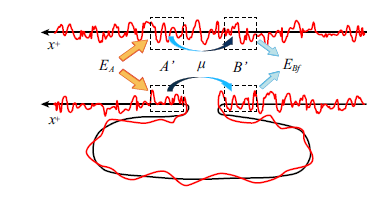
Squeezed vacuum states could allow long-distance energy teleportation. (Courtesy: iStockphoto/agsandrew)
The ability to teleport energy from one location to another could revolutionise the way quantum devices operate, but only if it can be made to work over practical distances. Now physicists think they know how.

Teleportation is the transfer of an object from one point in the universe to another without travelling through the space in between. It is common practice in many labs around the world. Since the early 90s, physicists have used it to teleport increasingly complex objects starting with photons and more recently with atoms and ions.
But that’s just the beginning. Back in 2010, we looked at the extraordinary work of Masahiro Hotta at Tohoku University in Japan who has worked out that it ought to be possible to teleport energy too. That’s something that could have profound implications for the way quantum devices and machines might be made to work in future.
But energy teleportation has an important limitation–the distance over which it can be sent. The limitations are so severe that it’s hard to see how energy teleportation could help even at the nanoscale. This “strong distance limitation has hampered experimental verification,” says Hotta.
But now he and a couple of mates say they’ve discovered a way round this limitation that allows energy to be teleported over almost any distance. And this new protocol for energy teleportation should allow experimental verification for the first time.
First some background. Energy teleportation relies on the natural quantum variations that occur in a vacuum on the smallest scale. On this scale, a vacuum is far from empty.
Instead, physicists think of it as a maelstrom of virtual quantum particles and antiparticles constantly leaping in and out of existence. That’s OK and does not violate any physical laws as long as the average energy of this vacuum is zero.
It also ensures that regions of space are entangled over these short distances. So what happens in one region immediately influences the region it is entangled with.
Hotta’s idea is to create a pair of entangled photons and allow one of them to interact with one region of space, thus injecting energy into the vacuum.
It then becomes possible to extract this energy from a nearby, entangled region of space using the other photon. That ensures that any increase in energy in one region is balanced by a decrease in another nearby region.
What limits this process is the distance over which regions of space are entangled, which is not very far, on the order of the Planck scale which is 10^-35 metres. And therein lies the problem.
Now Hotta and pals say they’ve found a way round this using an exotic quantum effect known as a squeezed state, which minimises the quantum noise in a system. They say that preparing the original photons in a squeezed state overcomes the distance limitation.
Instead of relying on entangled regions of space to balance the energy between one point and another, the squeezed state itself does the balancing. And that makes it possible to teleport energy over almost any distance.
Hotta and co say this should make the experimental verification of energy teleportation much easier. If they’re right, we could see the first energy teleportation experiments in the coming months and years.
Ref: arxiv.org/abs/1305.3955 : Quantum Energy Teleportation without Limit of Distance
Source: http://www.technologyreview.com/view/523716/energy-teleportation-overcomes-distance-limit/

No comments:
Post a Comment